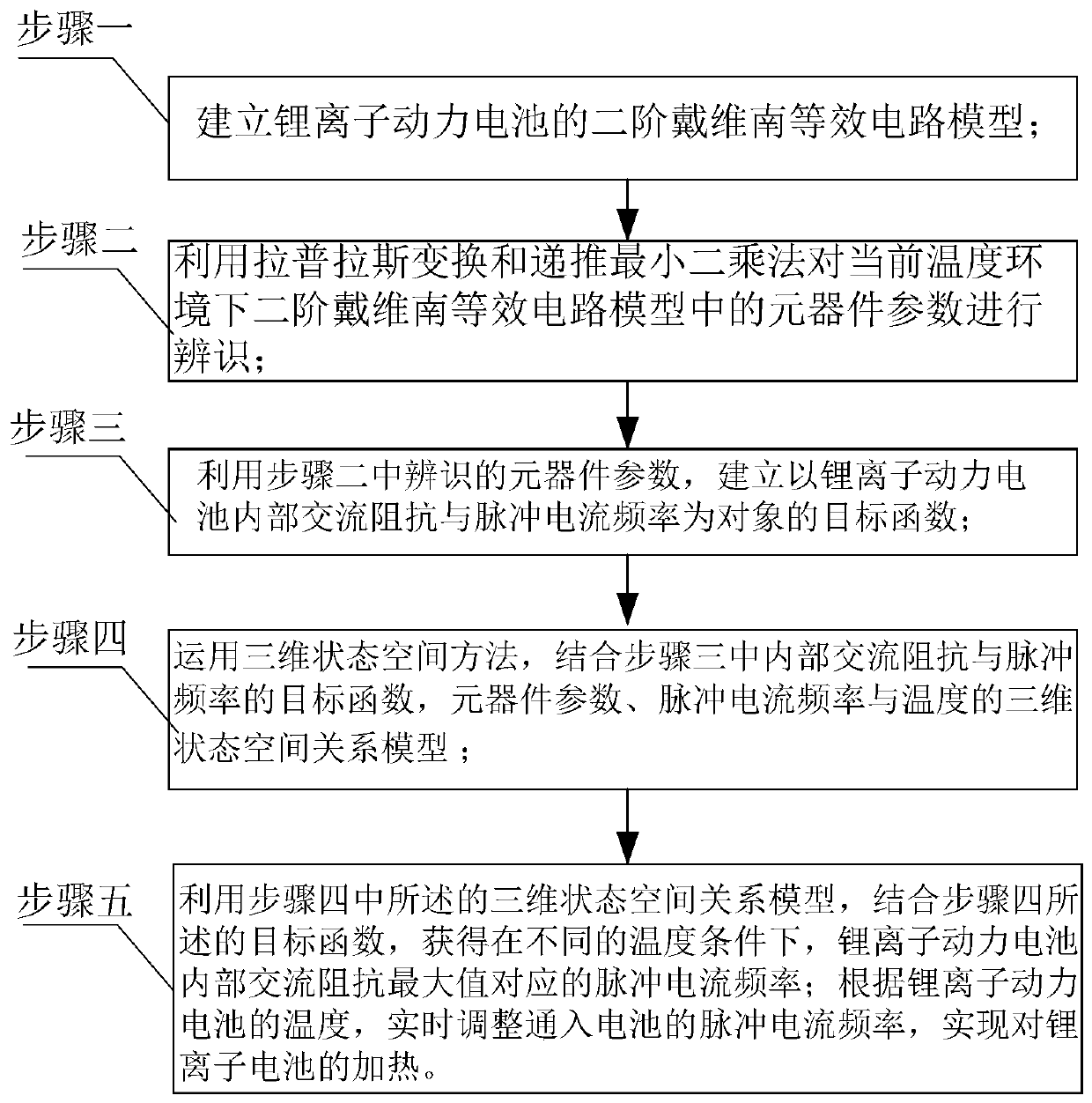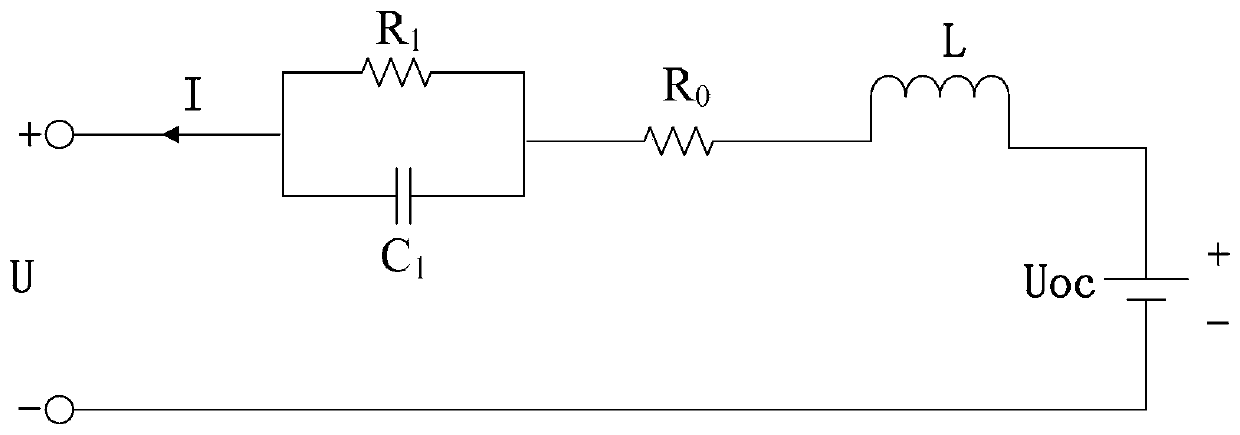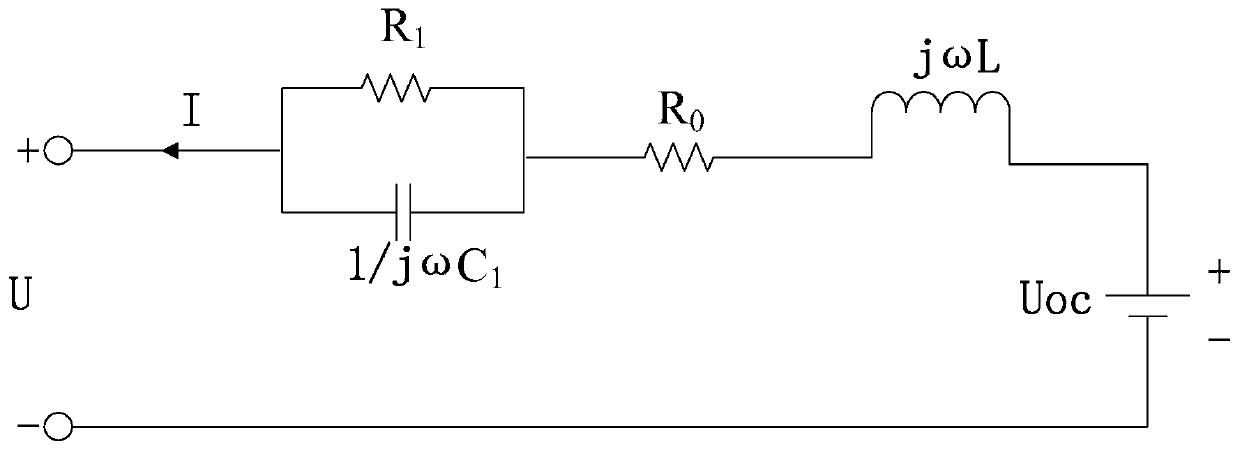Alternating excitation low-temperature heating method for lithium ion battery based on temperature change
A lithium-ion battery, temperature change technology, applied to secondary batteries, circuits, electrical components, etc., can solve problems such as poor charge and discharge performance, and achieve the best low-temperature self-heating effect of the battery
- Summary
- Abstract
- Description
- Claims
- Application Information
AI Technical Summary
Problems solved by technology
Method used
Image
Examples
specific Embodiment approach 1
[0015] Specific implementation mode 1: the following combination figure 1 To explain this embodiment, the method for alternating excitation low-temperature heating of a lithium-ion battery based on temperature changes in this embodiment includes:
[0016] Step 1: Establish a second-order Thevenin equivalent circuit model of the lithium-ion power battery;
[0017] Step 2: Use Laplace transform and recursive least square method to identify the component parameters in the second-order Thevenin equivalent circuit model under the current temperature environment;
[0018] Step 3: Use the component parameters identified in Step 2 to establish an objective function that takes the internal AC impedance and pulse current frequency of the lithium-ion power battery as the object;
[0019] Step 4: Using the three-dimensional state space method, combined with the objective function of internal AC impedance and pulse frequency in step three, establish a three-dimensional state space relationship mode...
specific Embodiment approach 2
[0021] Specific implementation manner 2: the following combination figure 2 This embodiment will be described. This embodiment will further explain the method of alternating excitation low-temperature heating of lithium ion battery based on temperature change described in embodiment 1. The second-order Thevenin equivalent of the lithium ion power battery described in step 1 is Circuit model includes polarization internal resistance R 1 , Polarization capacitance C 1 , Equivalent internal resistance R 0 , Equivalent inductance L and open circuit equivalent voltage source U oc ;
[0022] Polarized internal resistance R 1 Polarized capacitor C 1 Is connected to one end, and the polarization internal resistance R 1 This end of the is connected to the positive pole of the charging power supply; the polarization internal resistance R 1 The other end of the polarizing capacitor C is connected at the same time 1 The other end and equivalent internal resistance R 0 One end, equivalent int...
specific Embodiment approach 3
[0023] Specific implementation manner three: the following combination figure 2 This embodiment will be described. This embodiment will further explain the method of alternating excitation low-temperature heating of lithium-ion battery based on temperature change described in the second embodiment, and the second-order Thevenin equivalent circuit of the lithium-ion power battery described in step one The formula of the model is:
[0024]
[0025] Where U oc Is the open circuit voltage of the lithium ion battery, R 0 Is the ohmic resistance of the lithium-ion power battery, R 1 Is the polarization internal resistance of the lithium-ion power battery, C 1 Is the polarization capacitance of the lithium-ion power battery, U is the terminal voltage of the lithium-ion power battery, L is the equivalent inductance of the lithium-ion power battery, I is the charging current of the lithium-ion battery, and s is the frequency domain variable.
PUM
 Login to View More
Login to View More Abstract
Description
Claims
Application Information
 Login to View More
Login to View More - R&D
- Intellectual Property
- Life Sciences
- Materials
- Tech Scout
- Unparalleled Data Quality
- Higher Quality Content
- 60% Fewer Hallucinations
Browse by: Latest US Patents, China's latest patents, Technical Efficacy Thesaurus, Application Domain, Technology Topic, Popular Technical Reports.
© 2025 PatSnap. All rights reserved.Legal|Privacy policy|Modern Slavery Act Transparency Statement|Sitemap|About US| Contact US: help@patsnap.com



